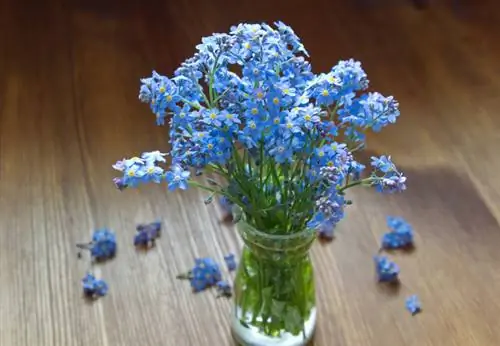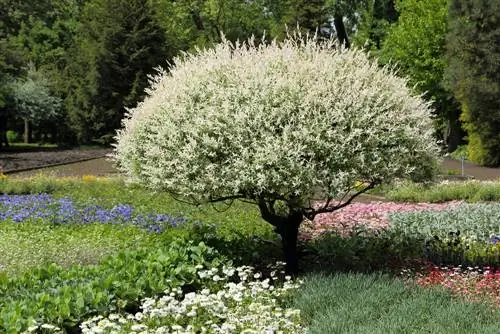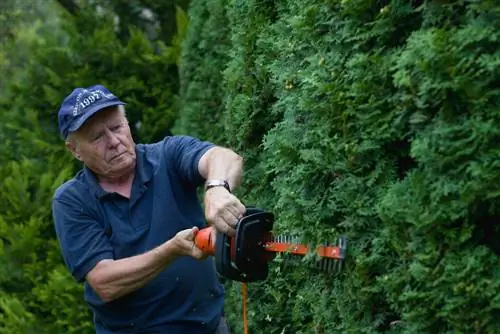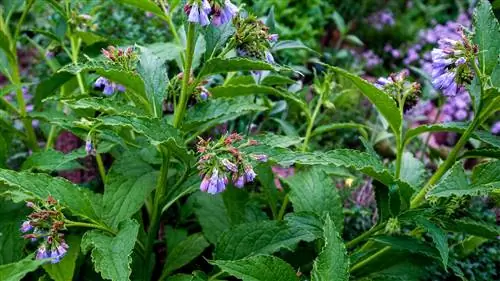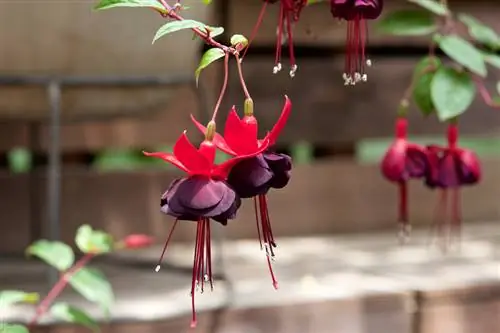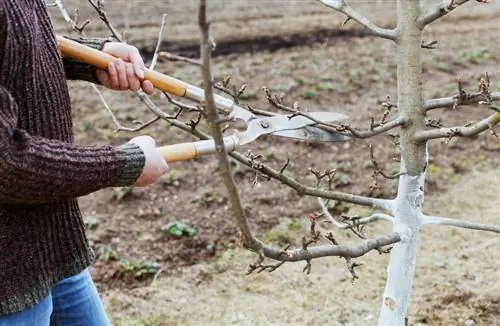- Author admin [email protected].
- Public 2023-12-16 16:46.
- Last modified 2025-01-23 11:20.
Forget-me-not is an undemanding perennial in the garden or on the balcony. Apart from occasional watering, little care is required. However, it makes sense to cut the plants either in autumn or after flowering. This will prevent self-seeding and fungal diseases.
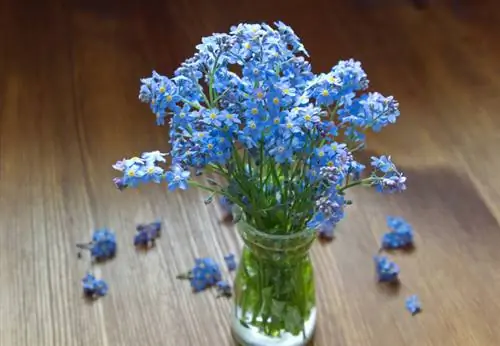
When and how should you cut forget-me-nots?
Forget-me-nots should be cut back in autumn or pruned after flowering to prevent self-seeding and fungal diseases. Remove spent inflorescences, diseased shoots and wilted leaves, and avoid heavy pruning of perennials in summer.
Pruning forget-me-nots in autumn
- Pruning perennials in autumn
- remove spent inflorescences
- cut diseased shoots and leaves
If you don't mind the dry inflorescences and wilted leaves, you don't have to cut back forget-me-nots.
The flowering period cannot be extended by pruning.
Otherwise, like all perennials, you should cut the plants back in the fall. To ensure that the forget-me-not survives the winter well, you can sprinkle some leaves over the flowers.
Prevent self-seeding by cutting
Forget-me-nots are self-pollinators and sow themselves in the garden through seeds. If you want to prevent self-seeding, you must cut the plants back after flowering. Otherwise, seeds will form that will be spread by animals in the garden.
If you want to collect seeds to sow elsewhere, leave only a few plants for the seed to mature.
Perennial perennials should not be cut back heavily in summer so that the plant can gather new strength through the leaves.
Pruning to prevent fungal diseases
Forget-me-nots are unfortunately prone to fungal diseases, which occur particularly in damp weather. The plants are then covered by a white or gray layer. This is either gray mold or powdery mildew.
Infected perennials must be cut back severely or removed completely so that the fungi do not spread to other plants.
To prevent fungal infestation from occurring in the first place, cut the forget-me-nots back completely after flowering.
Do not dispose of trimmings in the compost
You should not throw spent inflorescences into the compost if you do not want to self-sow. This also applies to cuttings from forget-me-nots that are infected with fungi or pests.
Tip
Forget-me-nots can be propagated not only by sowing, but also by cuttings. To do this, cut off small branches until summer so deep that there is still a piece of the root on them. Place the cuttings in a jar of rainwater to allow new roots to form.

